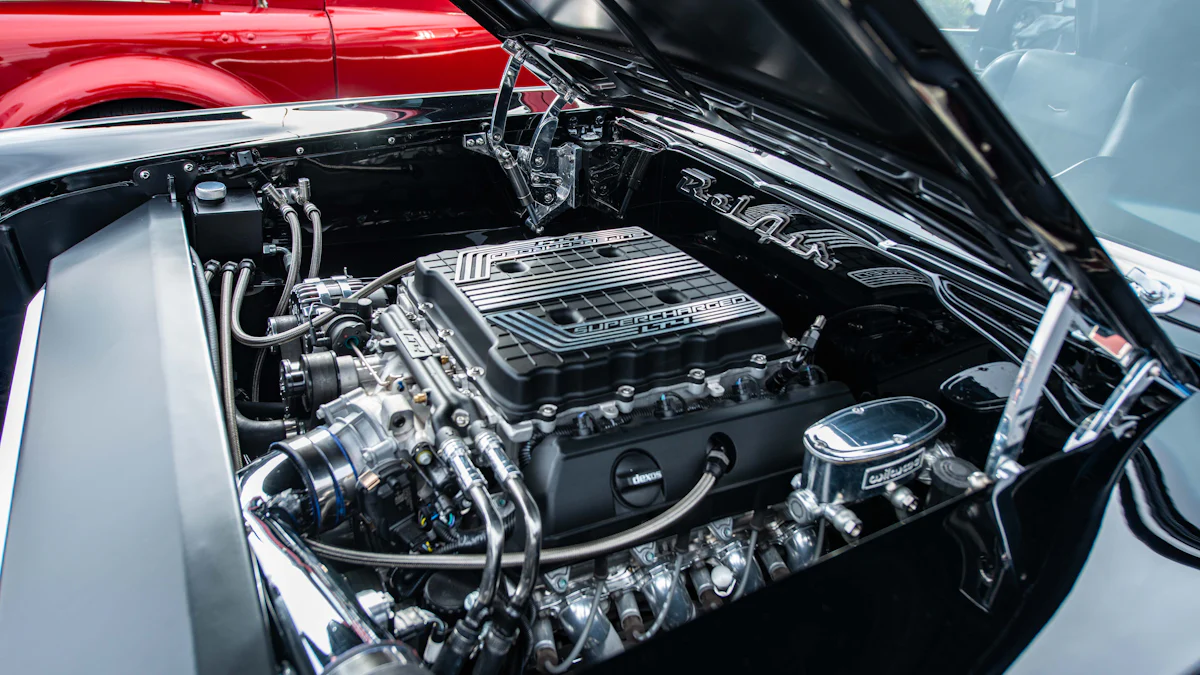
You love your classic car, but have you ever wondered how to boost its performance? The Ford Exhaust Manifold might be your answer. This essential component plays a crucial role in enhancing classic car performance by optimizing the flow of exhaust gases through the Engine Exhaust Manifold. Modern fuels, especially those with ethanol, can be harsh on older engines, often leading to inefficiencies. By upgrading to a Ford Exhaust Manifold, you can improve your engine’s efficiency and reduce emissions. This upgrade helps your car handle modern fuels better. So, why not give your beloved car the care it deserves and enjoy a smoother ride?
Understanding Ford Exhaust Manifolds

The Role of Ford Exhaust Manifolds
How They Affect Classic Car Performance
You might wonder how a Ford Exhaust Manifold can impact your classic car’s performance. Well, it plays a crucial role in managing the flow of exhaust gases from the engine. By efficiently collecting and directing these gases, the manifold helps maintain optimal engine performance. This is especially important for classic cars, where every component needs to work in harmony to preserve the vehicle’s original charm and functionality. A well-functioning Engine Exhaust Manifold ensures that your classic car runs smoothly, providing you with a reliable and enjoyable driving experience.
Differences Between Stock and Aftermarket Options
When it comes to choosing an Exhaust Manifold for your classic car, you have two main options: stock and aftermarket. Stock manifolds are designed to match the original specifications of your vehicle. They offer a straightforward replacement that maintains the car’s authenticity. On the other hand, aftermarket options provide more flexibility. They often come with enhanced features that can improve performance and efficiency. For instance, the Ford 390 Exhaust Manifold is known for its durability and ability to withstand high temperatures, making it a popular choice among enthusiasts. Whether you choose stock or aftermarket, understanding these differences can help you make an informed decision that aligns with your goals for your classic car.
Benefits of Ford Exhaust Manifolds
Improved Exhaust Flow and Engine Efficiency
One of the standout benefits of a Ford Exhaust Manifold is its ability to improve exhaust flow. By reducing backpressure, it allows the engine to breathe more freely. This results in better fuel efficiency and increased horsepower. The Ford Fe Exhaust Manifold is a great example of a product that enhances engine efficiency. With its robust construction, it ensures that your classic car performs at its best, even under demanding conditions. Improved exhaust flow not only boosts performance but also contributes to a cleaner environment by reducing emissions.
Compatibility with Classic Ford Models
Another advantage of Ford Exhaust Manifolds is their compatibility with a wide range of classic Ford models. Whether you own a Ford Bronco, E-series van, or F-series truck, there’s likely a manifold designed to fit your vehicle perfectly. The Ford Exhaust Manifold for the 5.8L, 351 engine is a prime example, offering a perfect fit for many classic models produced between 1988 and 1997. This compatibility ensures that you can upgrade your classic car without compromising its original design. By choosing the right manifold, you can enhance your vehicle’s performance while preserving its classic appeal.
Tips for Enhancing Efficiency
Installation Best Practices
Selecting the Right Manifold for Your Classic Car
Choosing the right manifold for your classic car is crucial. You want to ensure it matches your vehicle’s specifications. Consider the type of Fluid your engine uses. Some manifolds work better with certain Heat Transfer Fluids. If your car runs on Unleaded Fuel, make sure the manifold can handle it. This choice affects how well your car performs. You might also want to look into CPI Fluid Engineering products for guidance. They offer insights into selecting the best parts for your vehicle.
Proper Installation Techniques for Optimal Performance
Proper installation is key to getting the most out of your manifold. Start by gathering all necessary tools. Follow the manufacturer’s instructions closely. This ensures you don’t miss any steps. Pay attention to the Coolant system. It plays a role in keeping your engine cool. A well-installed manifold helps Control the flow of exhaust gases. This leads to better engine efficiency. Don’t forget to check the Wire Rope Lubricants. They help keep moving parts in good condition.
Maintenance and Upgrades
Regular Inspection and Cleaning for Longevity
Regular inspection keeps your manifold in top shape. Look for signs of wear and tear. Clean it regularly to prevent buildup. This helps maintain efficiency. Use Industrial cleaning products for best results. They remove grime without damaging parts. Check the Refrigeration system too. It affects how well your engine runs. Keeping everything clean extends the life of your manifold. It also improves performance.
Upgrading to High-Performance Manifolds
Consider upgrading to a high-performance manifold. This can boost your car’s efficiency. Look for manifolds that handle Unleaded Fuel well. They often offer better performance. Some are designed to work with Refrigeration Compressor Lubricants. This makes them more efficient. Upgrading can also improve your car’s compatibility with modern Coolant Fluids. This is especially important if you use Foodsafe Lubricants or Horticultural Oils. These upgrades make your car run smoother and last longer.
Common Issues and Solutions
Identifying and Fixing Exhaust Leaks
Recognizing Symptoms and Repair Techniques
Exhaust leaks can be a real headache for classic car owners. You might notice a few telltale signs if your exhaust manifold has a leak. A hissing or tapping sound from the engine bay often indicates a leak. You might also smell exhaust fumes inside the car, which is a clear warning sign. If you spot these symptoms, it’s time to roll up your sleeves and get to work.
To fix an exhaust leak, start by inspecting the manifold for cracks or gaps. Use a flashlight to check for any visible damage. If you find a crack, you can use a high-temperature epoxy to seal it temporarily. However, replacing the damaged part is the best long-term solution. Make sure to tighten all bolts and gaskets properly to prevent future leaks. Regular maintenance and inspections can help you catch these issues early, saving you time and money in the long run.
Managing Heat and Corrosion
Effective Heat Management Solutions
Managing heat is crucial for keeping your classic car running smoothly. Excessive heat can cause damage to the exhaust manifold and other engine components. To tackle this, consider using heat shields or wraps. These products help reduce the heat radiating from the manifold, protecting nearby parts. You can also install a high-performance manifold designed to handle higher temperatures. The Ford 390 Exhaust Manifold is known for its ability to withstand extreme heat, making it a popular choice among enthusiasts.
Regularly checking your car’s cooling system is another effective way to manage heat. Ensure that the radiator and coolant levels are in good condition. This helps keep the engine temperature in check, preventing overheating and potential damage.
Preventing and Addressing Corrosion in Classic Cars
Corrosion is a common enemy of classic cars, especially in the exhaust system. Moisture and road salt can lead to rust, compromising the manifold’s integrity. To prevent corrosion, apply a rust-resistant coating to the manifold. This protective layer acts as a barrier against moisture and other corrosive elements.
If you notice any rust spots, address them immediately. Use a wire brush to remove the rust, then apply a rust converter to stop further corrosion. Regular cleaning and maintenance can go a long way in preserving your manifold’s condition. By taking these steps, you can ensure your classic car remains in top shape, providing you with a reliable and enjoyable driving experience.
Enhancing your classic car’s efficiency with Ford exhaust manifold tips can transform your driving experience. By implementing these strategies, you ensure better performance and longevity for your beloved vehicle. Regular maintenance and upgrades to your exhaust system can significantly improve how your car handles modern fuels, especially those with ethanol, which are often bad for classic cars. Enthusiasts have praised the manifold’s impact on engine dynamics, highlighting its reliability and versatility. Additionally, using the right lubricants, such as ZDDP and compressor lubricants, can protect your engine and improve fuel efficiency. Remember, maintaining your classic car with the right oils and fuel additives not only preserves its charm but also enhances its performance on the road.
Post time: Nov-04-2024



